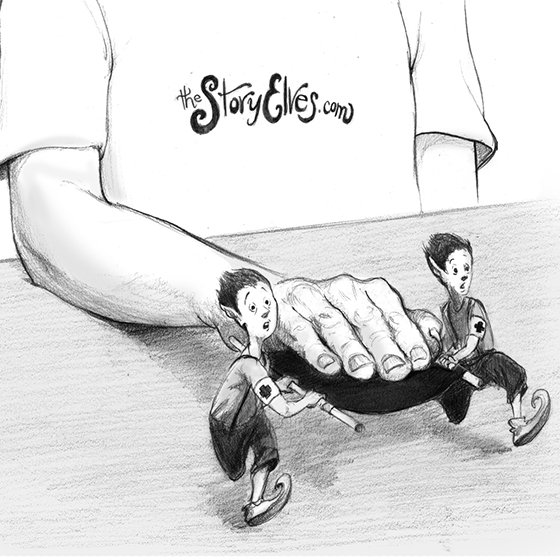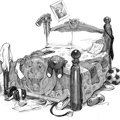
Write the whole story

Do you know a good storyteller? Maybe on long bike rides your dad has captivated you with a wondrous tale? Perhaps your grandmother gets you giggling as she serves a Sunday roast? Possibly your older brother’s best friend Finkelrood from down the lane seems to know a tremendous number of shaggy dog stories that make you howl with laughter?
Look around your house and your neighborhood for a good storyteller. When you find one, listen for just a few specific things:
1) how many words they use in their stories;
2) how many details they include;
3) how leisurely they seem to be, not at all in a rush to finish.
A story told by a talented storyteller stretches out and expands. You, the listener, become surrounded by story. The scenery beside the bicycle path disappears, the big roast on the table disappears. There is no room for anything but the story.
This is precisely the storytelling we want to bring to our writing. But here is the rub: writing stories down is more work than speaking. You have to slow down and record each and every word on paper!
So, sometimes we make a written story a wee bit shorter. We lop off a few words here and there. “Who will miss them?” we ask ourselves. We leave out this scene or decide to get rid of that character, so we can get the story written before our hand has to be put on a stretcher and rushed off for rehabilitation.
Suddenly, though, because the words have been thinned out, the reader of our story isn’t fully surrounded by story. There weren’t enough words and details to crowd out everything else.
New idea: Try one of the following:
1) Tell your story out loud to another person. Don’t worry if you stumble a bit as you talk. Don’t worry if you, at first, feel a bit shy. Keep going! Let yourself get involved in the telling! Then, with the story hanging in the air all around you, grab your pencil and write. Write! Write it just the way you said it. Yes, you may have some writer’s cramp in your hand by the end, but what a story you will have written!
2) Write your story down first. Then, tuck your paper deep into a drawer and tell the same story to a friend. Without looking at your paper, tell the story that you wrote. When you finish speaking the story aloud, ask yourself this: Did I tell a better story when I spoke it than when I wrote it? Think back to how you spoke it, grab your paper and add in words and details that you did not previously include.
Whatever you do, don’t turn words away because of the work of writing them! If the words are meant to be in your story, put them in while taking plenty of well-timed breaks (also see this tip on breaks, Consider-15-Minutes-A-Long-Time).
Your efforts to write as thoroughly as you speak will pay great dividends.







